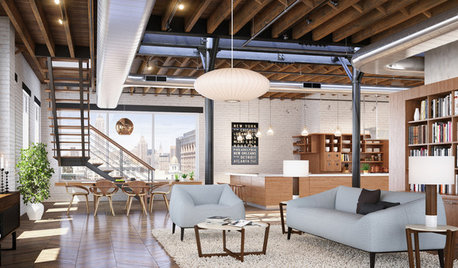Are 2 1200 gph pumps the same as 1 2400 gph?
Debbie Downer
11 years ago
Related Stories

LANDSCAPE DESIGNNatural Swimming Pools: More Beauty, No Chemicals
Keep your skin and the environment healthy with a pool that cleans itself, naturally
Full Story
FIREPLACESUpdated Woodstoves Keep Home Fires Burning
Better technology means more efficiency than ever for modern woodstoves
Full Story
SAVING WATERXeriscape Gardens: How to Get a Beautiful Landscape With Less Water
Conserve water and make gardening much easier with the xeriscape approach’s 7 principles
Full Story
SMALL SPACESCould You Live in a Tiny House?
Here are 10 things to consider if you’re thinking of downsizing — way down
Full Story
MOST POPULARIs Open-Plan Living a Fad, or Here to Stay?
Architects, designers and Houzzers around the world have their say on this trend and predict how our homes might evolve
Full Story
GREEN DECORATINGEasy Green: Big and Small Ways to Be More Water-Wise at Home
These 20 tips can help us all make the best use of a precious resource. How do you save water in summer?
Full Story
BATHROOM DESIGNGive a Little Glitz for the Bath
Houzz Gift Guide 2010: What to Give Your Spa-Loving Friends
Full StoryMore Discussions







waterbug_guy
sleeplessinftwayne
Related Professionals
Simpsonville Landscape Architects & Landscape Designers · Horsham Landscape Architects & Landscape Designers · Mountain Brook Landscape Architects & Landscape Designers · Palm Springs Landscape Architects & Landscape Designers · Port Royal Landscape Architects & Landscape Designers · Lakeland Landscape Contractors · Bound Brook Landscape Contractors · Little Ferry Landscape Contractors · Midland Landscape Contractors · Nanuet Landscape Contractors · Salem Landscape Contractors · Secaucus Landscape Contractors · South Hackensack Landscape Contractors · Watertown Landscape Contractors · Wilsonville Landscape Contractorswaterbug_guy
Debbie DownerOriginal Author
sleeplessinftwayne
waterbug_guy
DemiF
waterbug_guy
mike_il
DemiF
waterbug_guy
mike_il
waterbug_guy
mike_il
waterbug_guy
mike_il
waterbug_guy
mike_il
gilroybighouse